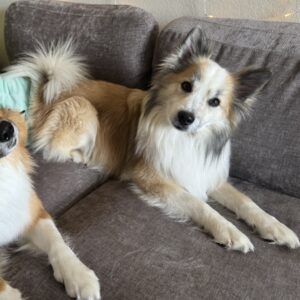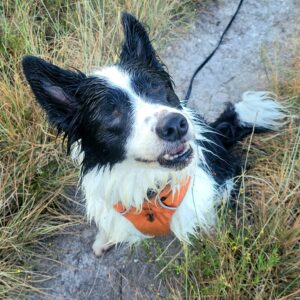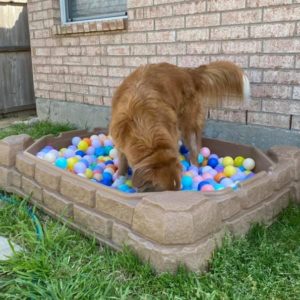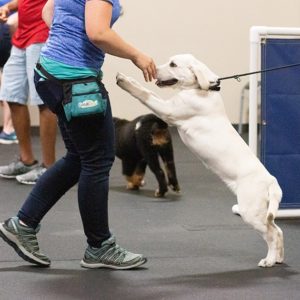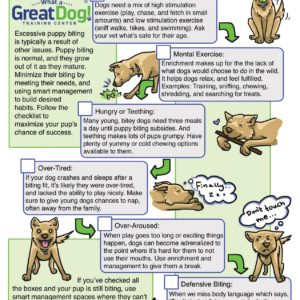0
0
by Adrian Phillips FDM We, as humans, enjoy talking. We enjoy it so much that it’s distracting to try to talk. I know myself—and many of my colleagues—will even talk to deaf dogs, fully aware that they can’t hear us. As a species, we have such a deep need to speak that hearing-impaired individuals have created a complete visual language. What does... Read more
0
0
How to Beat the Heat with Your Pup
☀️ by Brittany Wingfield Make sure your dog is getting the right kind of exercise for their age and fitness level. Here are some great tips to keep them safe and happy during warmer weather: Determine what’s age-appropriate for your young dog by using this handy guide. Avoid hot pavement and the hottest part of the day by walking early... Read more
0
0
All Good Things Come to Those Who Crate
by Brittany Wingfield ADT, FDM How do you take your pup from a playpen to a crate? One word: SLOW. We love using appropriate playpens to help puppies transition into our homes, but moving them from a roomy pen into an appropriately sized crate can be a stressful change. Yet it you tackle this training early, your pup will be... Read more
0
0
Tips for Living with a Blind Dog
Tips for Living with a Blind Dog by Paige Varvel, Trainer It can be challenging when a dog loses sight or if you’re adopting a blind dog into your home. There are many things to take into consideration when making your home a safe place for a pup with impaired or no vision. Consider investing in a good pair of... Read more
0
0
Enrichment to the Rescue! by Brittany Wingfield
In this blog, learn ways to increase your dog’s mental exercise! Read more
0
0
Is Your Dog a Jumper? Here’s a Great Tip!
Does your dog jump on everyone he sees? If so, be sure to click here! Read more
0
0
Destructive Doggies – Tips for Survival
By Maureen Patin CPDT-KA, Founder/Head Trainer of What a Great Dog! Training Centers Does your dog get into everything in sight while you’re away? Preventing this takes some time and effort, but with the right strategies you can teach your dog to consistently choose his toys and not yours! Just like toddlers, dogs, especially puppies want to put anything and... Read more
0
0
The Best Way to Handle Puppy Biting
Puppy biting is a 100% natural canine behavior. Its also naturally outgrown as the pup matures. Punishing for puppy biting is not recommended as it puts your pup at an increased risk for developing other behavior problems, including human-directed aggression. If you do a great job of meeting your pup’s needs, you’ll find that excessive puppy biting is greatly minimized.... Read more
0
0
RAD Agility Trials Coming to WAGD Richardson!
We will be having our first Reactive And Distracted Agility trial on 11/21-22 Read more
0
0
The Power of the Cookie Jar
By Maureen Patin CPDT-KA Founder/Head Trainer What a Great Dog Training Centers Setting up treat stations around the house will take your dog training to a whole new level! Being able to quickly reward your dog for around-the-house behaviors is powerful. This concept also tells your dog that great behavior “could” be rewarded at ANY time, not just when you’re wearing... Read more

